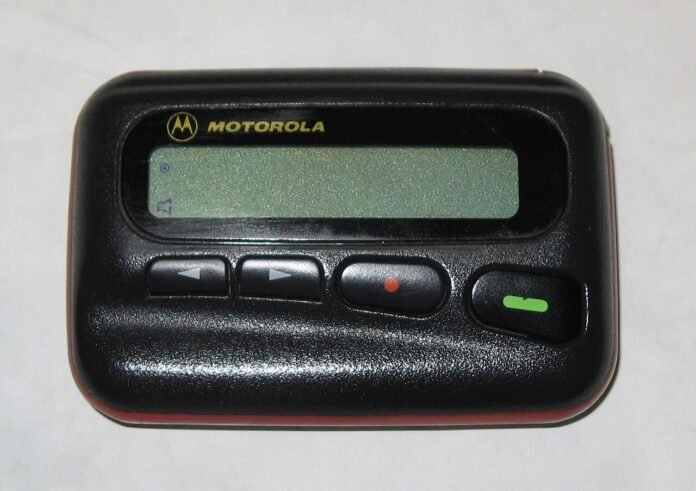In Lebanon, a coordinated detonation of beepers has resulted in the deaths of eight individuals and injuries to over 2,750 people, many suffering severe wounds. The explosions occurred around 3:30 p.m. local time (6 p.m. IST). Iran’s state media has reported that Mojtaba Amani, Iran’s Ambassador to Lebanon, was also injured in the blasts.
Lebanese Health Minister Firass Abiad confirmed the fatalities and injuries, stating in a televised press conference that “Eight people were killed, including a girl,” and “Approximately 2,750 people were injured, with over 200 critically hurt.” The injuries primarily affected the face, hands, and stomach.
The militant group Hezbollah, designated as a terrorist organization by both the United States and the European Union, is the primary political and military force in Lebanon and receives support from Iran. Hezbollah, which supports Hamas in its ongoing conflict with Israel, is facing significant challenges following these attacks.
According to Saudi news channel Al Hadath, the beeper attacks resulted in the death of the son of Ali Ammar, a Hezbollah representative in the Lebanese Parliament. Initial reports suggest that the explosions might have been caused by overheating lithium batteries, potentially due to a cyber attack. However, other sources speculate that explosive materials were intentionally placed inside the pagers before distribution.
Hezbollah has accused Israel’s Mossad of orchestrating the attack, labeling it the “largest security breach” the organization has encountered. The group claims that all numeric pagers detonated almost simultaneously, calling it an “Israeli breach” of its communication networks.
A Hezbollah source, speaking to AFP under anonymity, reported that “Dozens of Hezbollah members were wounded in southern Lebanon and in Beirut’s southern suburbs after their beepers exploded.” Lebanon’s National News Agency described the incident as an “unprecedented enemy security event” involving “handheld pagers detonating” at nearly the same time across the country.
AFP noted that Hezbollah relies on its own telecommunications system and has advised its members to avoid mobile phones since the onset of the Gaza conflict nearly a year ago to prevent Israeli surveillance.
Following the pager explosions, Hezbollah released a statement indicating that “Several beeper devices used by Hezbollah members and officials exploded around 3:30 p.m. local time on Tuesday.” The statement confirmed the deaths of a girl and her two brothers and mentioned that extensive security and scientific investigations are underway to determine the cause of the simultaneous detonations.
Understanding Pagers: The Basics and Their Legacy
Pagers, also known as pagers, were once an essential communication tool before the rise of mobile phones. These devices, which gained prominence in the 1980s and 1990s, played a crucial role in personal and professional communication. Although they are largely obsolete today, understanding their functionality and historical significance provides insight into the evolution of communication technology.
What is a Pager?
A pager is a wireless telecommunication device used primarily for receiving short messages. It typically comprises a small screen and a few buttons, allowing users to receive and, in some models, respond to brief text or numeric messages. Pagers are designed to alert users to incoming messages through audible tones, vibrations, or visual signals.
How Do Pagers Work?
Pagers operate through a network of radio transmitters and receivers. When a message is sent to a pager, it is transmitted over radio waves to a nearby paging transmitter. The pager, tuned to the specific frequency of the transmitter, picks up the signal and displays the message on its screen. Some advanced models also have the capability to send replies or communicate with other pagers.
There are two primary types of pagers: numeric and alphanumeric. Numeric pagers can only display numbers, while alphanumeric pagers can show a combination of letters and numbers, allowing for more detailed messages. Some advanced pagers even offer features such as email access and basic web browsing.
The Role of Pagers
Before the advent of smartphones, pagers were widely used in various fields. In healthcare, doctors and emergency medical personnel relied on pagers to receive urgent messages and respond quickly to emergencies. Businesses also used pagers to ensure that employees could be reached promptly, particularly in industries where immediate communication was critical.
Legacy and Modern Relevance
Despite the proliferation of mobile phones, pagers are not entirely obsolete. They continue to serve specialized roles, particularly in environments where reliable, immediate communication is crucial. For instance, hospitals still use pagers due to their reliability and ability to function in areas where mobile networks might be unreliable. Additionally, pagers are less prone to battery drain compared to modern smartphones.
In summary, pagers were a revolutionary step in personal and professional communication, providing a crucial link between individuals in the pre-smartphone era. While they have largely been replaced by more advanced technologies, their reliability and simplicity continue to make them valuable in specific scenarios. Understanding their history and functionality highlights the progress we have made in communication technology and the enduring need for reliable communication tools.

